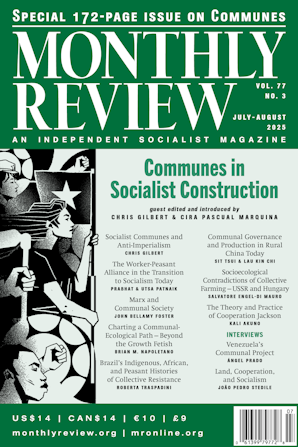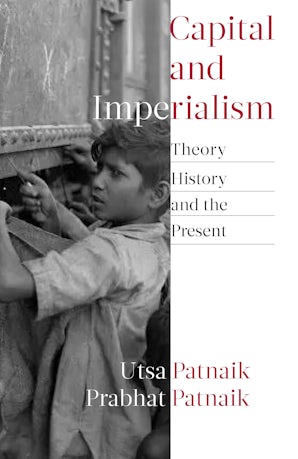Also in this issue
- Inside a People's Commune: Report from Chiliying (Excerpt)
- Communal Governance and Production in Rural China Today
- Socioecological Contradictions in the Development of Socialist Collective Farming: Drawing from USSR and Hungarian Histories
- Popular Power in Brazil: What Can We Learn from Indigenous, African, and Peasant Histories of Collective Resistance?
- Land, Cooperation, and Socialism
- Charting a Communal-Ecological Path: Beyond the Growth Fetish
- Marx and Communal Society
- Socialist Communes and Anti-Imperialism: The Marxist Approach
- Venezuela's Communal Project
- A Special Issue on Communes in Socialist Construction
- July-August 2025 (Volume 77, Number 3)
Books by Prabhat Patnaik
Capital and Imperialism
by Utsa Patnaik and Prabhat Patnaik
Article by Prabhat Patnaik
- The Drain of Wealth: Colonialism before the First World War
- Neoliberal Capitalism at a Dead End
- The October Revolution and the Survival of Capitalism
- 'Monopoly Capital' Then and Now
- Capitalism and Its Current Crisis
- Imperialism in the Era of Globalization
- Origins of the Food Crisis in India and Developing Countries
- Capitalism in Asia at the End of the Millennium


